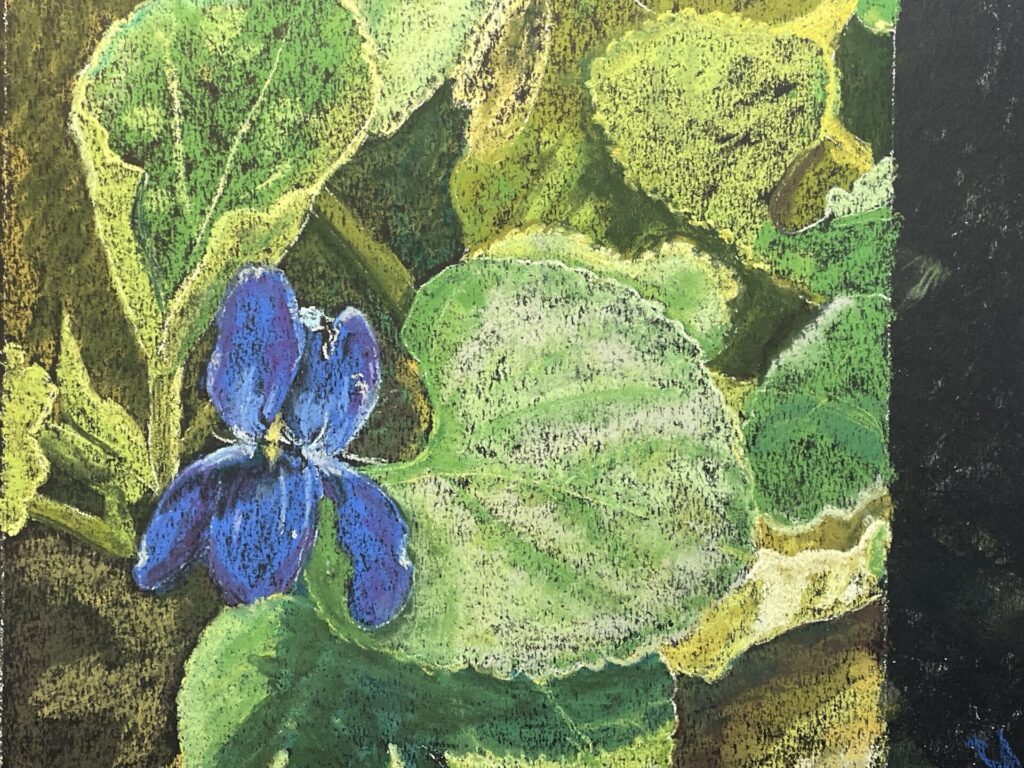the pastel medium
Detail of “Spring Runoff” by Thea Nordling
What is Pastel?
Pastel is a pure pigment whose particles, when seen under a microscope, look like colorful, multi-faceted diamonds. Reflecting and refracting light like a prism, these particles provide the medium with intense color and luminance. Sometimes confused with chalk, which is limestone and a dye, pastel is a dry, powered, pigment mixed with a liquid binding solution to form a paste. The paste is shipped into sticks and allowed to dry. When applied to a conservation ground and properly framed, pastel is the most stable and permanent of all painting media.
How Do Artists Use Pastel?
Some artists describe pastel as an intimate medium, allowing the application of colors directly to a surface, without the intervention of a paintbrush or palette knife. Extensive choices of soft to brilliant pastel color provide infinite creative possibilities for painting and drawing. Pastel can be combined with watercolor, gouache, acrylic, charcoal or pencil in mixed-media paintings.
When Did Pastel Become Popular?
Historically, pastel is traced back to the fifteenth century when Leonardo da Vinci introduced “the dry colors method” as a highlighting technique for his drawings. Pastel emerged as a major force in eighteenth century portraiture. Rosalba Carriera was among the first to work exclusively in pastel. With the advent of Impressionism, new techniques appeared and pastel painting subjects diversified to include landscapes and nudes. Edgar Degas, Mary Cassatt, William Merritt Chase, Childe Hassan, Georgia O’Keeffe, Frank Reaugh, and James McNeil Whistler featured pastels among their most important works. Today, pastel has the same stature as oil and watercolor. Many of our most renowned living artists distinguish themselves in pastel, enriching the art world with this beautiful medium.

